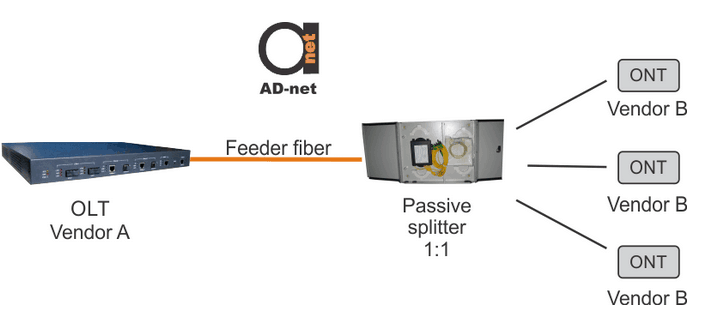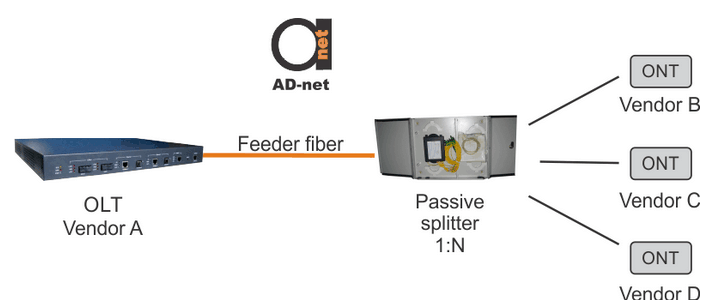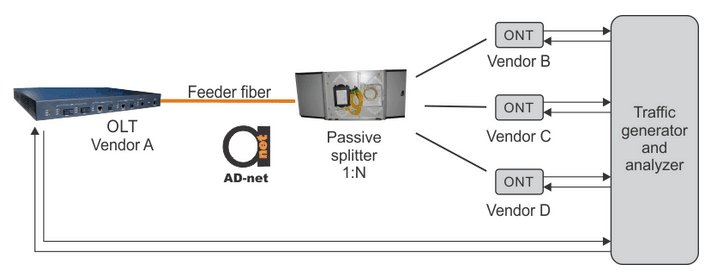Testing of the 1:1 interoperability is quite simple, as illustrated in Figure 1. It includes connecting ONUs/ONTs from Vendor A with one OLT gepon from Vendor B. Analyze would show how successfully the products work together.

Figure 1. 1:1 interoperability testing
In the 1:N testing evaluation of the results is more complicated, since there are more products from multiple vendors. In fact, there is only single device from each manufacturer as shown in Figure 2.

2. 1:N interoperability testing
Both testing installations evaluate equipment work on multiple PON layers. Tested layers for GPON are:
-
PMD (Physical Media Dependent) sublayer;
-
TC (Transmission Convergence) sublayer;
-
OMCI (ONT Management and Control Interface) sublayer;
-
Application layer.
The areas of the PON network that are being chosen for test cases are significant for the network operators. The main question is the optimal compatibility – ability to transmit solid signal with fixed wavelength and synchronization level. However, ONU/ONT turnup and management, and service-related functionality testings are of the great value. The VoIP and IPTV services are tested for interoperability.
As Figure 3 shows, testing is performed with the help of traffic generator/analyzer, that provides input and detects received traffic from both ends of the connection. The device can provide specialists with data about packet loss, signal delay, and network throughput.

Figure 3. Test setup with traffic generation and analysis


